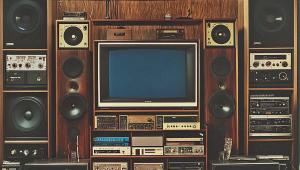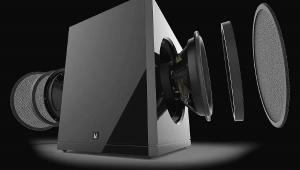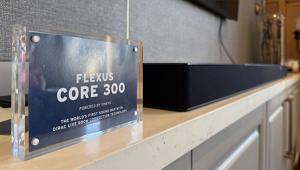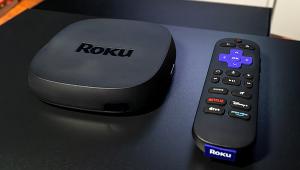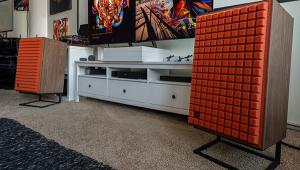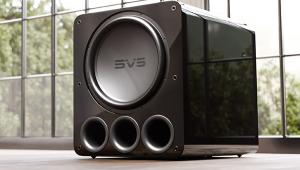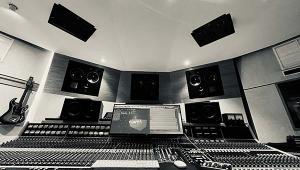Samsung's Blu/HD Combo Player: BD-UP5000 Page 2

| The Short Form |
| Price $999 / samsung.com / 800-726-7864 |
| Snapshot |
| Though not without its quirks, this preproduction Blu-ray Disc/HD DVD player reveals strong potential. |
| Plus |
| •Consistently sharp pictures from HD DVD, Blu-ray, and DVD discs •Smooth, mostly glitch-free operation •Supports both HDi and BD-Java interactivity •Eliminates need for two separate high-def disc players |
| Minus |
| •Audio in our prototype still a work in progress •Some issues with 1080p/24 video output in our early sample |
| Key Features |
| •1080p/24/60 high-def output •Silicon Optix HQV video upconversion •Onboard Dolby TrueHD decoding •HDi and BD-Java interactivity •Outputs: HDMI 1.3; component-, composite-, and S-video; coaxial and optical digital audio; 7-channel analog and stereo audio; Ethernet port |
During testing, I first connected the Samsung via HDMI to an Anthem AVM50 preamp/processor, and then afterward directly via HDMI to a 1080p-rez TV. I also ran cables from the player's analog audio output to the Anthem's 6-channel analog input. Video output was set at 1080p/60, although I confirmed the player's ability to output a 1080p/24 signal.
The player gives you three output choices in the Audio setup menu: PCM, Bitstream (re-encode), and Bitstream (audiophile). The difference between those last two is that, when re-encode is selected, audio effects like menu-button sounds get mixed into the player's audio output. A Speaker Setup submenu for the analog output lets you choose small or large options for front, center, surround, and surround back speakers, as well as switch the LFE output on or off, but there's no option for speaker distance/delay.
The player's Display Setup menu lets you set video-output resolution to 480i, 480p, 720p, 1080i, or 1080p, and configure the 1080p output for direct 24-frames-per-second playback if you choose. In the HDMI Setup menu, you'll find additional options to turn on Anynet (HDMI-CEC, a feature for controlling multiple HDMI-linked devices via one remote) and to switch on the player's variable Sharpness and DVD Noise Reduction settings. Enabling a Sharpness control on a player is a definite no-no, and the Samsung's DVD noise reduction tended to blur picture details at both high and low settings (at least in this preproduction piece), so I left both off.
Performance With almost any prototype of a sophisticated player, you're going to encounter glitches that you won't likely find in final store samples - and this early Duo was no exception. Among its apparent quirks was a significant lip-sync delay when using the internal audio decoder to output multichannel PCM via HDMI or when using the multichannel analog output; in both cases, there was also a clicking sound that accompanied the audio. (Fortunately, the Duo unit worked fine when playing back a Dolby Digital/DTS bitstream from the coax output.)
In addition, this prototype had trouble playing some Sony Blu-ray titles, which would black out about a minute into playback and remain that way until I unplugged the player's power and rebooted it. There was trouble, too, with some of the newer 20th Century Fox Blu-ray Discs like 28 Weeks Later. (A firmware upgrade for Samsung's BD-P1200 and BD-P1000 Blu-ray players has corrected that problem, but it hadn't been implemented yet in my sample.) Finally, I noted significant "jaggy" artifacts on one of my reference Blu-ray titles, Paramount's Mission: Impossible III, when the player was feeding its 1080p/24 output into the 24p-friendly Pioneer PDP-5010FD plasma TV I used for testing - a problem that went away when I swapped in Samsung's BD-P1200 player. Needless to say, Samsung was still busy finalizing its firmware for the Duo at our deadline, and we'd be surprised to see any of these obvious problems appearing in final production.
- Log in or register to post comments









